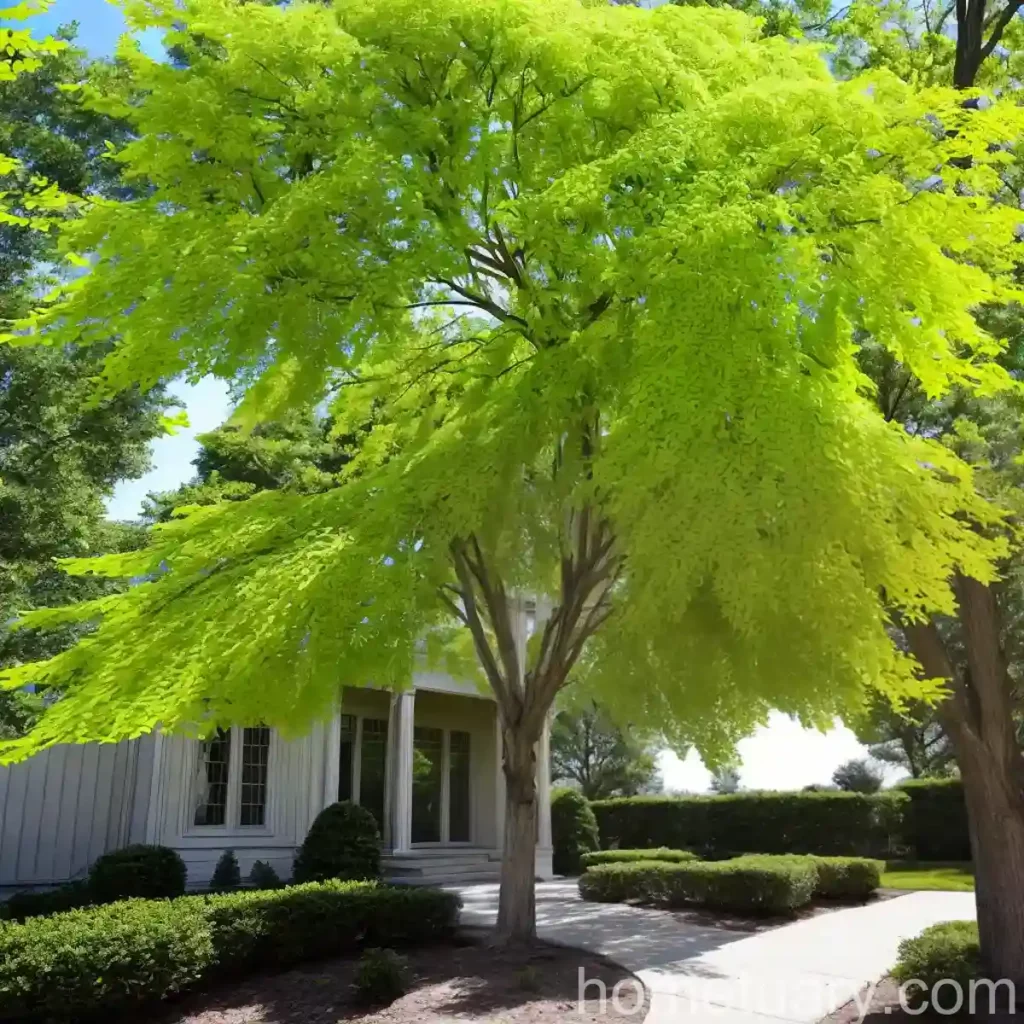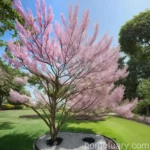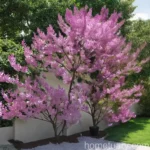Plant Scientist’s Guide to Honey Locust (Gleditsia triacanthos)
As a plant scientist, I have always been fascinated by the wide array of plant species that adorn our planet. Each plant has its own unique characteristics, benefits, and challenges when it comes to cultivation and maintenance. Today, I am excited to delve into the world of honey locust (Gleditsia triacanthos), an intriguing and versatile tree species that holds significance in various cultural, ecological, and horticultural contexts.
What is Honey Locust (Gleditsia triacanthos)?
Honey locust, scientifically known as Gleditsia triacanthos, is a deciduous tree native to North America. Belonging to the family Fabaceae, it is recognized for its elegant appearance, adaptable nature, and diverse uses. The name “honey locust” is derived from the sweet, honey-like substance found in its seed pods, adding to the allure and appeal of this remarkable tree.
Key Takeaways – Honey Locust (Gleditsia triacanthos)
Before we delve deeper into the aspects of cultivating and caring for honey locust, let’s take a quick look at some key takeaways about this plant:
- Scientific Name: Gleditsia triacanthos
- Common Name: Honey Locust
- Family: Fabaceae
- Native Habitat: North America
- Characteristics: Thorny branches, pinnately compound leaves, distinctive seed pods
- Uses: Landscaping, shade tree, timber, wildlife attraction
- Adaptability: Tolerant of urban conditions, nitrogen-fixing abilities
Now that we have a foundational understanding of honey locust, I will explore various facets of its cultivation, uses, maintenance, and ecological significance.
Culture of Honey Locust
Uses
Honey locust is a multi-faceted tree with a wide range of uses, making it an asset in diverse settings. Some of its primary uses include:
- Landscaping: Honey locust trees are often incorporated into landscaping designs due to their graceful appearance, light, dappled shade, and tolerance of urban environments.
- Timber: The strong, durable wood of honey locust is utilized in woodworking and construction, particularly for making furniture, fence posts, and small specialty items.
- Wildlife Habitat: The tree’s pods and leaves provide a food source for various wildlife species, including deer, rabbits, and birds.
- Nitrogen Fixation: Honey locust has the ability to fix nitrogen in the soil, enhancing its fertility and benefiting nearby plantings.
Water
Honey locust exhibits moderate to high drought tolerance once established, making it suitable for areas with limited water availability. However, consistent watering is beneficial during the initial establishment period, especially in dry or arid regions. Adequate soil moisture is essential for promoting healthy growth and foliage density.
Sunlight
As a sun-loving species, honey locust thrives in full sunlight, displaying optimal growth and foliage development when provided with ample sunshine. While it can tolerate partial shade, exposure to direct sunlight is preferred for ensuring robust and vigorous tree growth.
Fertilizer
When it comes to fertilizing honey locust, it is important to assess the specific nutrient needs of the tree based on the soil quality and overall growth performance. A balanced, slow-release fertilizer, applied in early spring, can support the tree’s nutritional requirements, especially in nutrient-deficient soils.
Soil
Honey locust is adaptable to a wide range of soil types, including loamy, sandy, and clay soils, as long as the soil is well-draining. However, it thrives in moist, fertile soils with a neutral to slightly acidic pH range. Prioritizing soil quality and structure contributes to the overall health and vitality of honey locust trees.
Pruning Honey Locust
Pruning plays a crucial role in maintaining the health, form, and structural integrity of honey locust trees. Key considerations for pruning include:
- Thorn Management: Some varieties of honey locust possess thorny branches, requiring careful handling during pruning to ensure safety and ease of maintenance.
- Deadwood Removal: Regular pruning helps eliminate dead, damaged, or diseased branches, promoting overall tree vigor and vitality.
- Form and Size Control: Proper pruning can help shape the tree, control its size, and enhance its aesthetic appeal within a landscape or garden setting.
It is advisable to perform pruning during the dormant season to minimize stress on the tree and facilitate rapid wound healing.
Propagation of Honey Locust
Honey locust trees can be propagated through various methods, including:
- Seed Propagation: Harvesting and planting seeds from mature pods is a common method for propagating honey locust. It is important to scarify the seeds to break their hard coating before sowing to improve germination rates.
- Grafting: Grafting desirable cultivars onto rootstock can help preserve specific traits and characteristics of the parent tree.
- Cuttings: Softwood or hardwood cuttings can be used for vegetative propagation, although success rates may vary.
Careful attention to environmental conditions, moisture levels, and proper timing is essential for successful propagation of honey locust trees.
Container Popularity and Benefits
The adaptability and aesthetic appeal of honey locust trees make them popular choices for container planting in various contexts, including urban landscapes, patios, and commercial developments. Some benefits of container cultivation include:
- Space Efficiency: Container-grown honey locust trees enable the incorporation of greenery and shade in smaller or confined spaces, enhancing the overall ambiance.
- Urban Greening: Utilizing containers for honey locust trees contributes to urban greening efforts, promoting environmental benefits and aesthetic enhancement in densely populated areas.
- Versatility: Containers provide flexibility in relocating the trees as needed, offering convenience and adaptability in diverse settings.
Common Diseases and Pest Management
Disease Diagnosis
Honey locust trees may be susceptible to certain diseases, including:
- Gleditsia Borer: This wood-boring insect can cause extensive damage to honey locust trees, leading to dieback and decline. Visual inspection of the bark and wood for entry holes and frass can aid in early detection.
- Leaf Spot Diseases: Fungal pathogens can result in the development of leaf spots and defoliation. Regular monitoring of foliage for signs of discoloration and fungal growth can assist in identifying and addressing these diseases.
- Root Rot: Excessive soil moisture and poor drainage can create favorable conditions for root rot pathogens. Observing signs of wilting, yellowing foliage, and stunted growth can indicate potential root health issues.
Addressing diseases early through proper diagnosis and targeted management strategies is crucial for preserving the health and vigor of honey locust trees.
Common Pests
In addition to diseases, honey locust trees may face challenges from various pests and insects, including:
- Aphids: These sap-sucking insects can cause leaf curling, stunted growth, and the development of sticky honeydew on foliage.
- Spider Mites: Infestations of spider mites can lead to the yellowing and stippling of leaves, affecting overall tree vitality.
- Locust Leaf Miner: The larvae of these insects tunnel into the leaves, causing unsightly and potentially damaging patterns of leaf discoloration and browning.
Implementing integrated pest management practices, such as regular monitoring, beneficial insect conservation, and targeted insecticide application if necessary, is essential for mitigating pest pressures on honey locust trees.
Botanist’s Tips for Honey Locust Care
Environmental Considerations
- Site Selection: When planting honey locust, choose a location with well-draining soil, ample sunlight, and adequate space for root and canopy development. Consider the potential for overhead utility lines and structures when determining planting sites.
- Watering Practices: Implement a consistent watering regimen, particularly during the tree’s establishment phase, to support root development and overall health. Adjust watering frequency based on environmental conditions and soil moisture levels.
Tree Maintenance
- Mulching: Applying a layer of organic mulch around the base of the tree helps conserve soil moisture, reduce weed competition, and insulate the root zone from temperature fluctuations.
- Regular Inspection: Conduct periodic inspections of the tree for signs of pest infestations, disease symptoms, and overall growth performance to identify and address potential issues early.
Growth Considerations
- Pruning Frequency: Schedule regular pruning sessions to remove dead or diseased branches, shape the tree, and manage its size within the intended landscape or garden setting.
- Soil Health: Prioritize soil quality and fertility through periodic soil testing and amendments to ensure optimal growing conditions for honey locust.
Fun Facts about Honey Locust
- Honey locust trees are known for their impressive thorns, which can exceed 10 inches in length in some varieties.
- The sweet, edible pulp found in honey locust pods has historical significance as a food source for indigenous communities and early settlers.
- Some honey locust cultivars are known for their vibrant fall foliage, displaying rich shades of gold, yellow, and orange, adding to the tree’s visual appeal in autumn landscapes.
Links to External Resources
For those interested in further exploring the world of honey locust and accessing additional information, here are some valuable external resources:
- The Plants Database – USDA
- Missouri Botanical Garden – Plant Finder
- Arboretum at Penn State University
- NatureServe Explorer – An Online Encyclopedia of Life
In conclusion, honey locust (Gleditsia triacanthos) stands as a captivating and valuable addition to our natural and cultivated landscapes, offering a blend of ornamental beauty, ecological contributions, and practical uses. Whether it’s providing shade in a park, enhancing a garden design, or contributing to wildlife habitat, the honey locust tree continues to leave a lasting impact in numerous spheres, reflecting the inherent beauty and resilience of nature itself.















